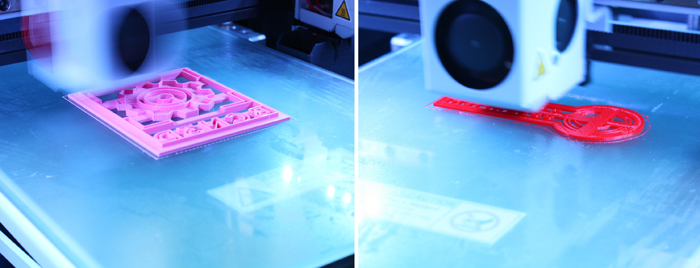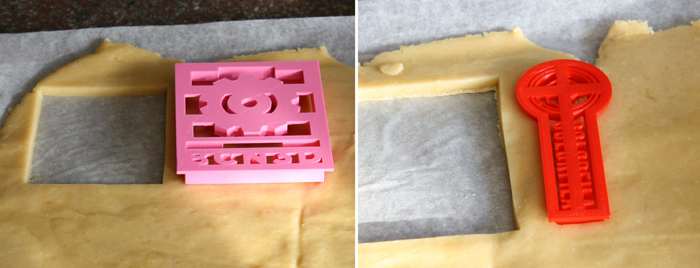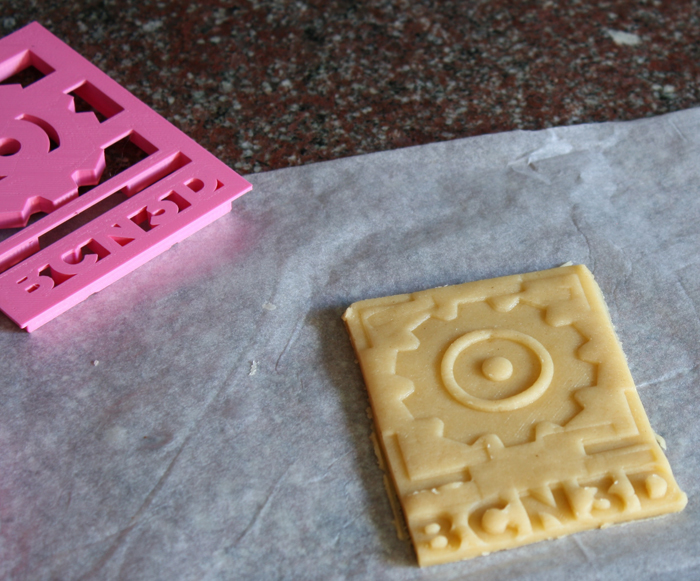Printed molds, the future of the bakery
The range of fields that 3D printing can be applied is wider and wider every day. Jewelry, footwear, industrial design, medicine, architecture and education are some of the sectors that already today benefit from the advantages of 3D printing over other manufacturing processes.
Today we’ll show you one of its possible applications in the world of creative pastry with a real case in which you yourselves will be able to print the template for cutting a shortbread, to enjoy alone or share them with family and friends. In this recipe, we omit the egg as an ingredient so the cookies will last longer and will be suitable for those who, for whatever reason, cannot take egg.
The molds we use to shape our cookies are designed and manufactured by ourselves, in the same way that any user of a 3D printer could. For manufacturing we used PLA, a plastic material of natural origin which is biodegradable, so it is not toxic and can be in contact with food. The brand will use filament is COLORFILA. In addition, the PLA is made in Barcelona and is certified for contact with food.
The first thing to do then is to choose the image from which we will manufacture our mold. This time, we chose BCN3D Technologies logos and COLORFILA. For its design we have used a 3D drawing program which has differentiated the cutting area -all the perímetro-, in the area of -the mark inside.
Download both molds at our Thingiverse profile
After creating the 3D geometry, it only remains to generate GCode software (we have done it with the BCN3D Cura) and now we can proceed with the production of the piece. Depending on the level of detail you need our mold this process will take us 45 minutes to 3 hours. Once the impression has finished, we clean the mold by hand in cold water and recommend you do the same after use it. Never put in the dishwasher.

Next, we prepare the ingredients to make our cookies. We need:
- 500g cake flour
- 250g butter (unsalted better)
- 125g icing sugar
- 75g milk
- 2 tablespoons liquid vanilla
- 1 pinch of salt
- Tracing paper for the oven
To prepare the dough we followed a standard recipe and have used a blender of Vorwerk Thermomix TM31, which allows us to have it ready in just seconds. To this are added the ingredients in the container and the mixer to act for 4 minutes at speed pin scheduled. Once finished, we will take the dough being careful not to cut off with knives and place on baking paper.
If not have a Thermomix of these characteristics we perform mass manually. So, we will have to make a “volcano” with sugar and flour and introduce the ingredients inside to proceed to mix with your hands until a ball that does not stick to your fingers to form. To obtain a sheet having a constant thickness and avoid problems at the time of cut use a roller to smooth and compact the mass.

When we have the dough ready we introduce it in the refrigerator and let it stand for at least 12 hours to gain consistency. Time to bake cookies will be necessary to remove the dough from the refrigerator at least two hours before putting in the oven, which we preheat to 170 ° C. We said last time and cut the dough with our 3D printed mold. . If you have many small holes or narrow spaces, we must be very careful, because you can easily catch the dough.

Bake the cookies 10 to 12 minutes, always watching not brown over the account and … We have our cookies!
Depending on your passion for sweet you can decorate them with icing sugar, fondant and edible paint pigment, that is a customer decision.
Bon Appetite!



